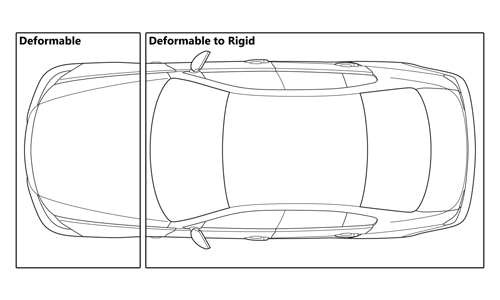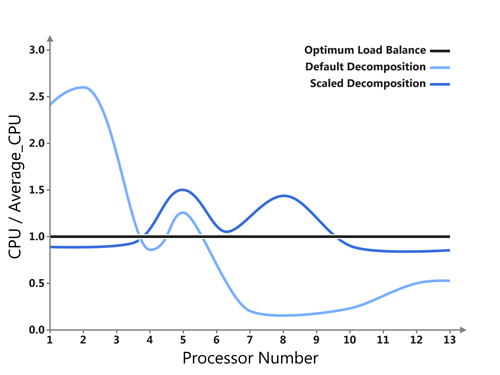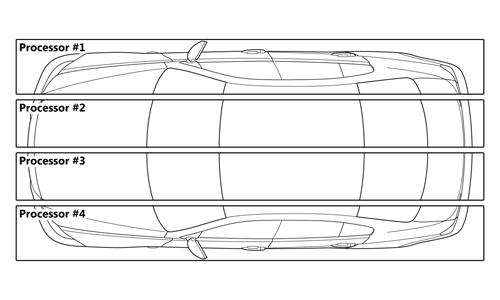You may have read the previous post on deformable to rigid switching which works by turning a predefined set of deformable components into a rigidbody at a user-defined time to save on element processing costs. This may not necessarily be true when running using any of the MPP-LSDYNA executables since the domain decomposition routines do not account for the additional rigid bodies that get created due to switch definitions. As a result of this, there is an increased possibility of the computationally expensive deformable components being lumped on just a few processors while the remaining processors handle the computationally inexpensive rigid bodies. This creates a poor load balance situation and may result in insignificant improvement in job turnaround time.
To get true performance benefits from the deformable to rigid switching, one must accompany this with a custom domain decomposition that ensures distribution of the newly created rigid bodies across ALL processors to achieve optimum load balance. This can be achieved by transformation of the model prior to the decomposition (using sx, sy, sz) or by using region based decomposition available in 971 versions of LS-DYNA.

















